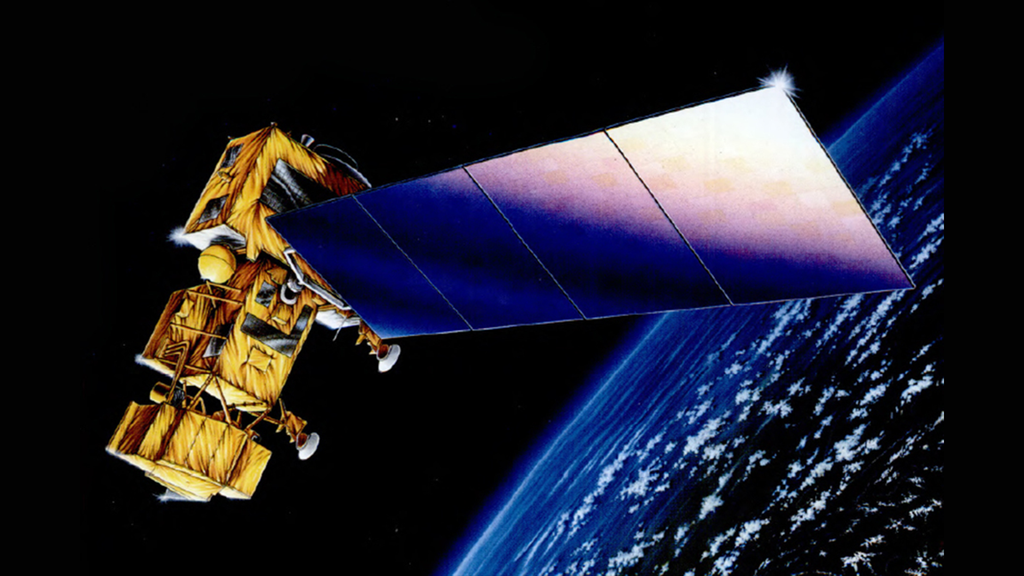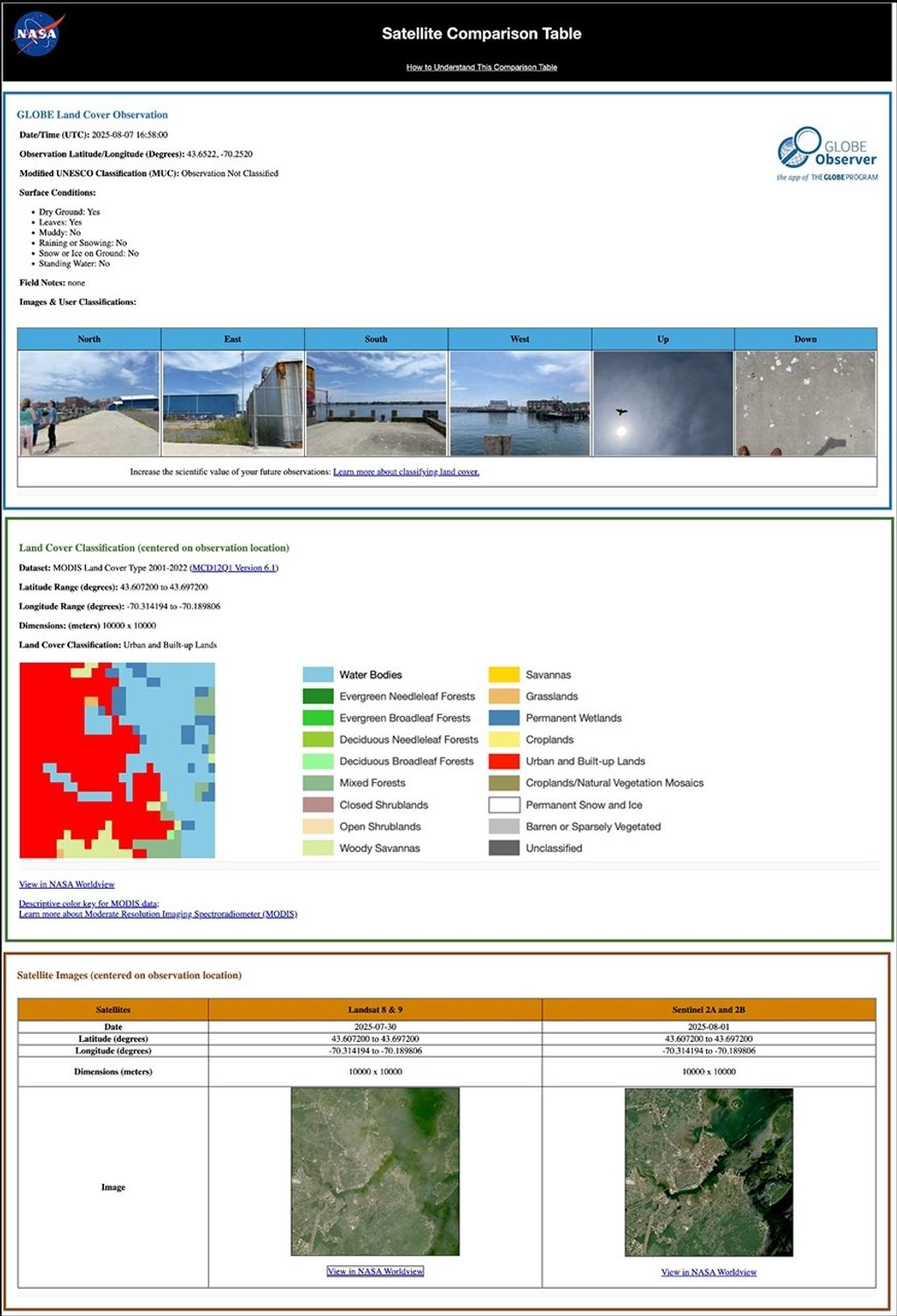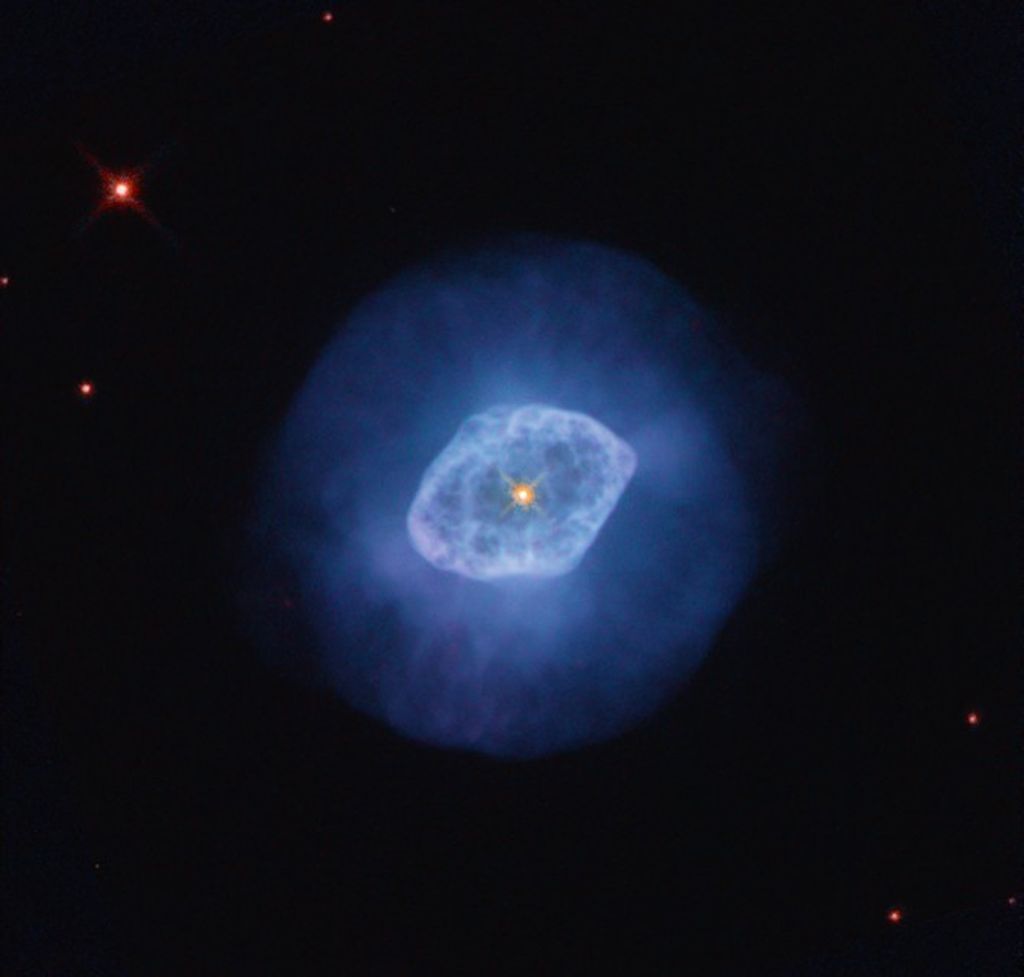1 min read
JADES-GS-z13-1 in the GOODS-S field (NIRCam Image)
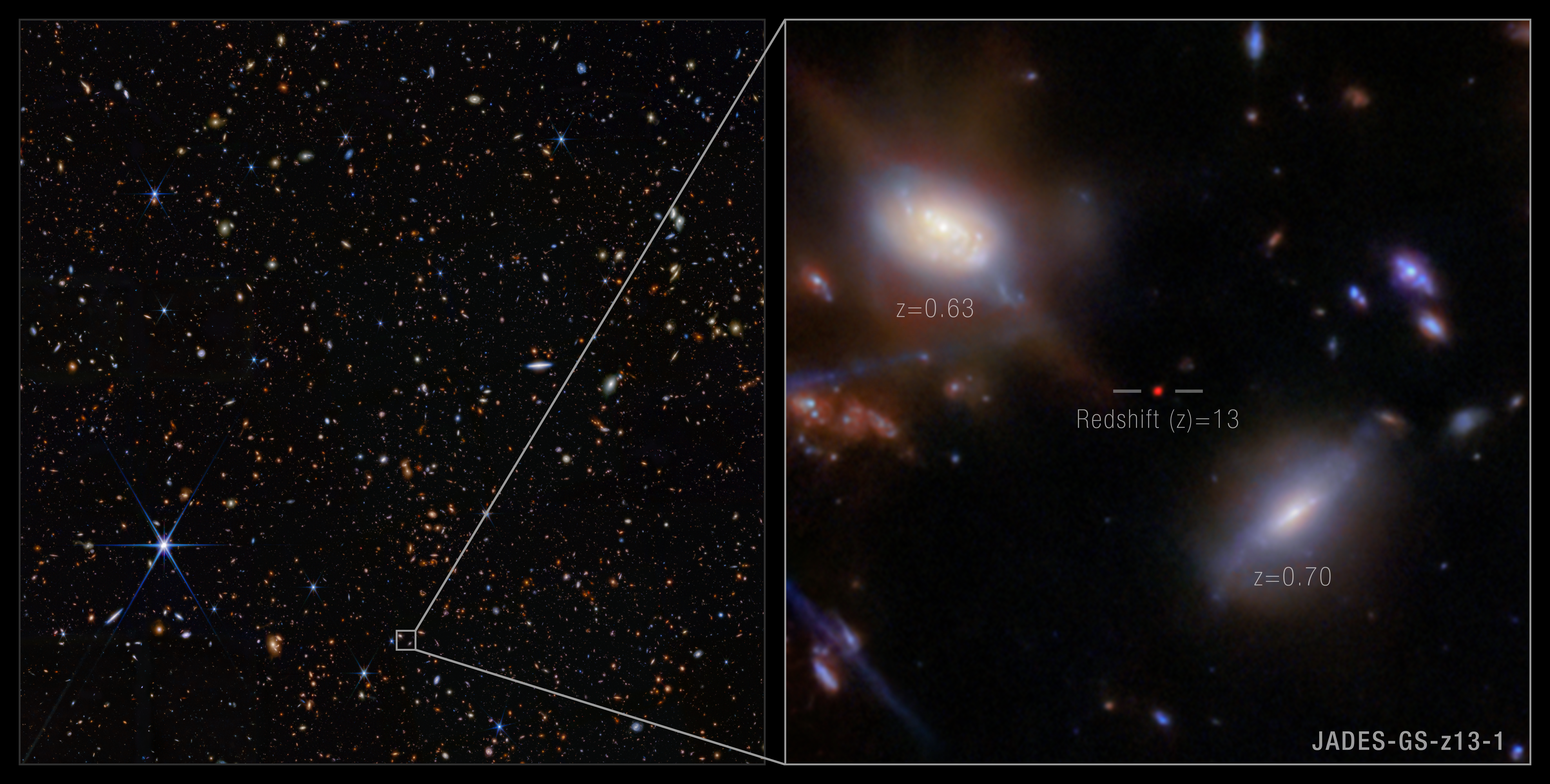
The incredibly distant galaxy JADES-GS-z13-1, observed just 330 million years after the big bang, was initially discovered with deep imaging from NASA’s James Webb Space Telescope’s NIRCam (Near-Infrared Camera). Now, an international team of astronomers definitively has identified powerful hydrogen emission from this galaxy at an unexpectedly early period in the universe’s history. JADES-GS-z-13 has a redshift (z) of 13, which is an indication of its age and distance.
About the Object
- R.A. PositionR.A. PositionRight ascension – analogous to longitude – is one component of an object's position.03:32:36.89
- Dec. PositionDec. PositionDeclination – analogous to latitude – is one component of an object's position.-27:46:49.33
- ConstellationConstellationOne of 88 recognized regions of the celestial sphere in which the object appears.Fornax
- DimensionsDimensionsThe physical size of the object or the apparent angle it subtends on the sky.Main image is about 6.2 arcminutes across
About the Data
- Data DescriptionData DescriptionProposal: A description of the observations, their scientific justification, and the links to the data available in the science archive.
Science Team: The astronomers who planned the observations and analyzed the data. "PI" refers to the Principal Investigator.This image was created with Webb data from proposal: 1180 (D. Eisenstein)
- InstrumentInstrumentThe science instrument used to produce the data.NIRCam
- Exposure DatesExposure DatesThe date(s) that the telescope made its observations and the total exposure time.29 Sept. - 10 Oct. 2022
- FiltersFiltersThe camera filters that were used in the science observations.F090W, F115W, F150W, F200W, F277W, F356W, F410M, F444W
- Object NameObject NameA name or catalog number that astronomers use to identify an astronomical object.The JWST Advanced Deep Extragalactic Survey (JADES), JADES-GS-z13-1
- Object DescriptionObject DescriptionThe type of astronomical object.High-redshift galaxy
- Release DateMarch 26, 2025
- Science ReleaseNASA’s Webb Sees Galaxy Mysteriously Clearing Fog of Early Universe
- CreditImage: NASA, ESA, CSA, JADES Collaboration, Brant Robertson (UC Santa Cruz), Ben Johnson (CfA), Sandro Tacchella (Cambridge), Phill Cargile (CfA), Joris Witstok (Cambridge, University of Copenhagen), P. Jakobsen (University of Copenhagen), Alyssa Pagan (STScI), Mahdi Zamani (ESA/Webb)

These images are a composite of separate exposures acquired by the James Webb Space Telescope using the NIRCam instrument. Several filters were used to sample wide wavelength ranges. The color results from assigning different hues (colors) to each monochromatic (grayscale) image associated with an individual filter. In this case, the assigned colors are: Blue: F090W + F115W + F150W Green: F200W + F277W Red: F356W + F410M + F444W
Related Images & Videos
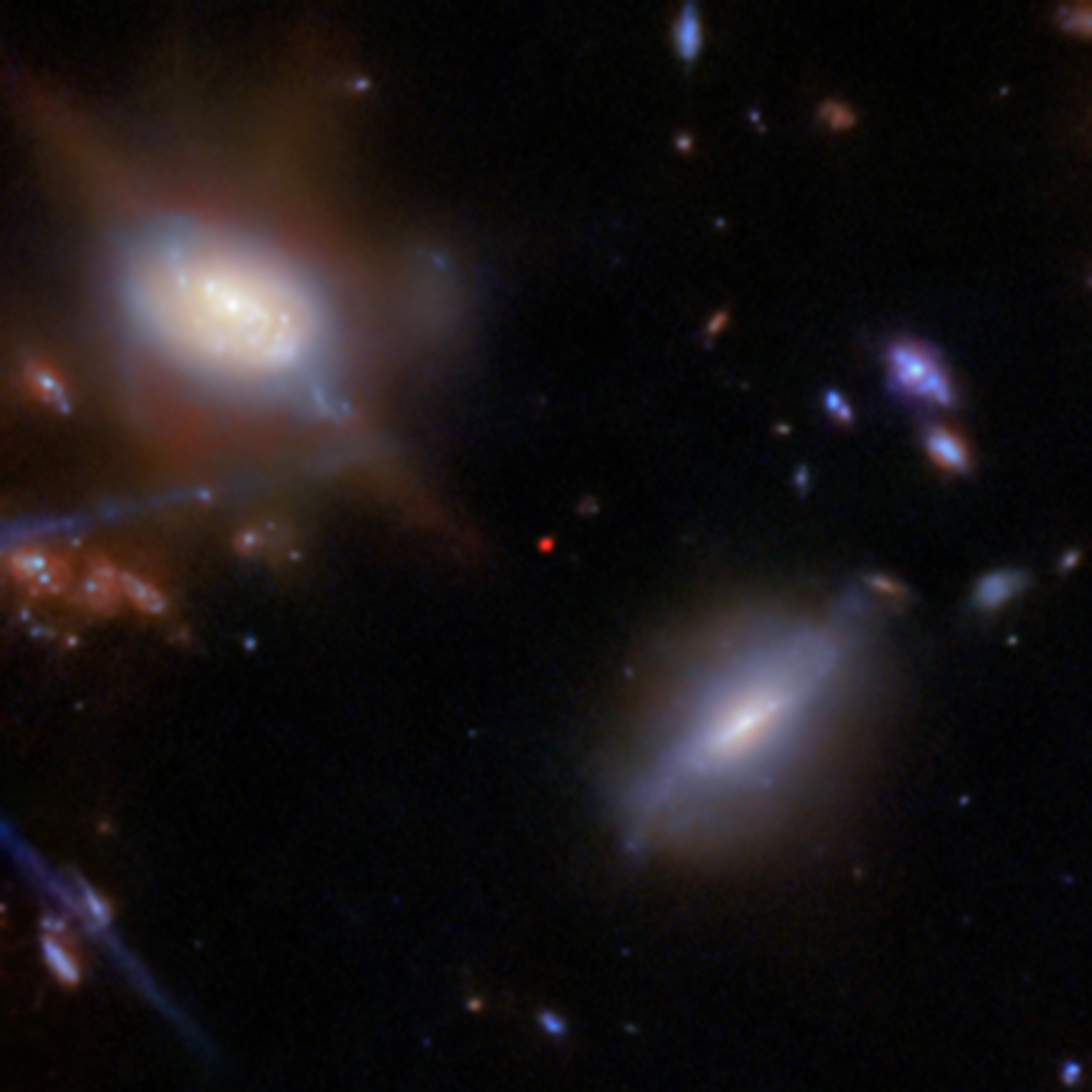
JADES-GS-z13-1 (NIRCam Close-Up)
This image shows the galaxy JADES GS-z13-1 (the red dot at center), imaged with NASA’s James Webb Space Telescope’s NIRCam (Near-Infrared Camera) as part of the JWST Advanced Deep Extragalactic Survey (JADES) program. These data from NIRCam allowed researchers to identify...
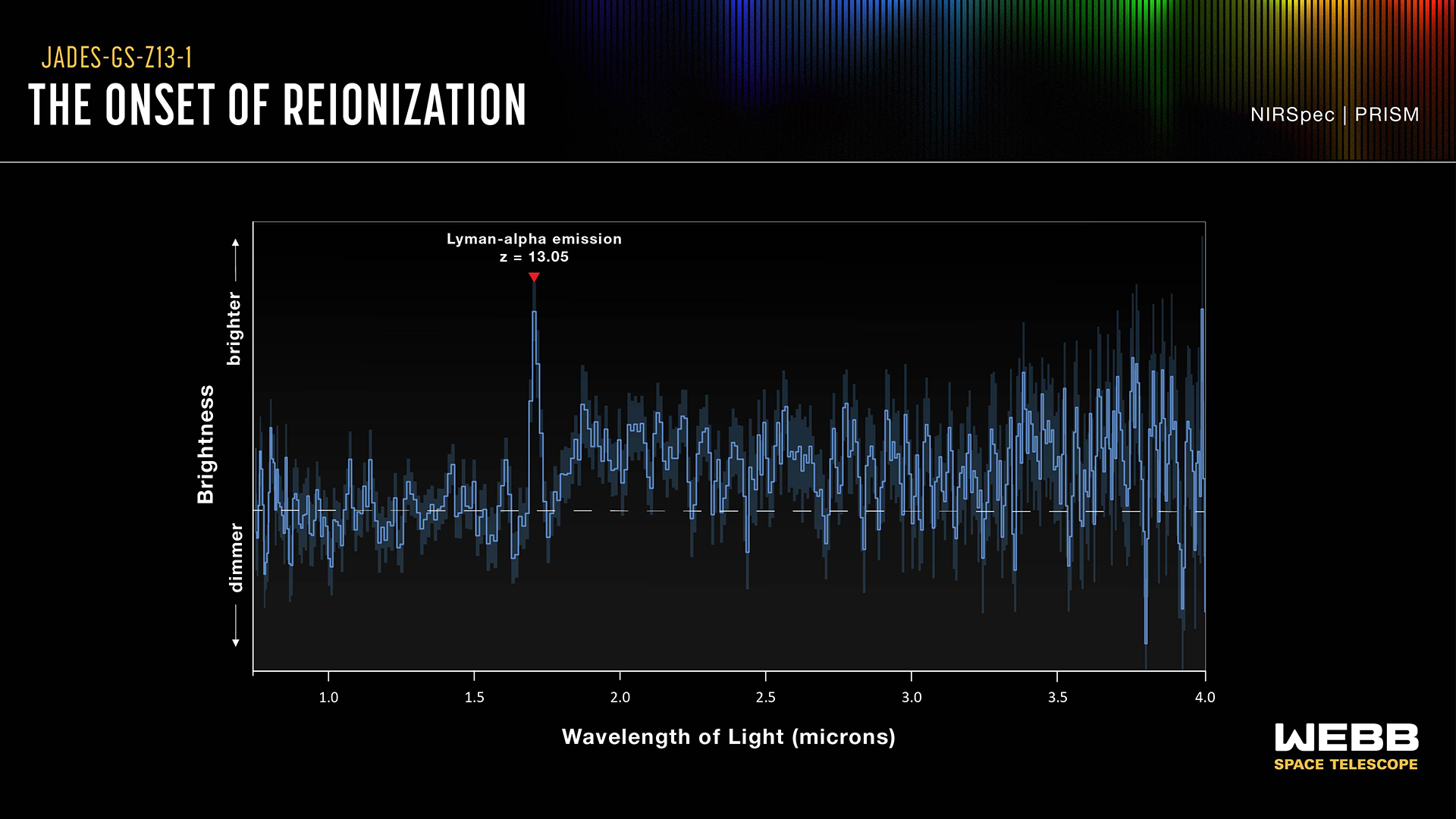
JADES-GS-z13-1 Spectrum Graphic
NASA’s James Webb Space Telescope has detected unexpected light from a distant galaxy. The galaxy JADES-GS-z13-1, observed just 330 million years after the big bang (corresponding to a redshift of z=13.05), shows bright emission from hydrogen known as Lyman-alpha emission. This...
Share
Details
Laura Betz
NASA’s Goddard Space Flight Center
Greenbelt, Maryland
laura.e.betz@nasa.gov
NASA, ESA, CSA, JADES Collaboration, Brant Robertson (UC Santa Cruz), Ben Johnson (CfA), Sandro Tacchella (Cambridge), Phill Cargile (CfA), Joris Witstok (Cambridge, University of Copenhagen), P. Jakobsen (University of Copenhagen), Alyssa Pagan (STScI), Mahdi Zamani (ESA/Webb)









